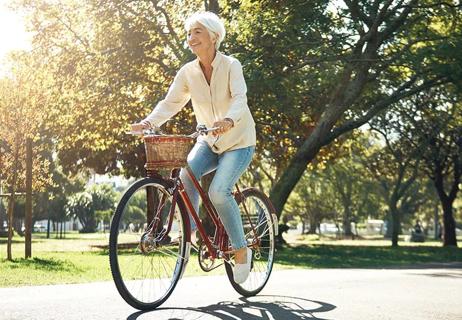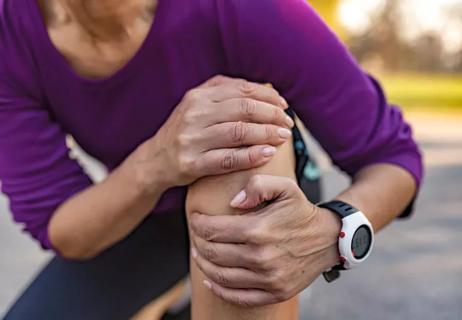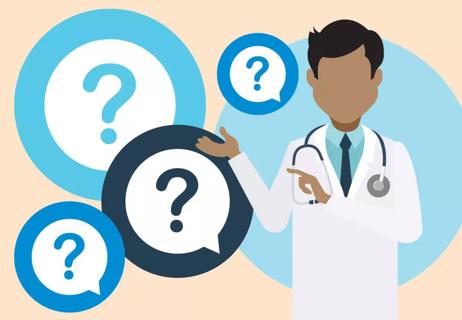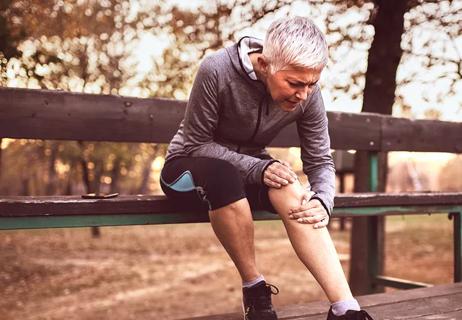Your knees could be hurting at bedtime because of inflammation, injury or some other condition that gets worse with pressure and positioning
Knee pain worse at night? Arthritis and a few other conditions related to inflammation or injury can cause knee pain to worsen at night. This nighttime pain can also be incredibly frustrating, especially if it’s keeping you up or hurts more when you’re resting.
Advertisement
Cleveland Clinic is a non-profit academic medical center. Advertising on our site helps support our mission. We do not endorse non-Cleveland Clinic products or services. Policy
Orthopaedic surgeon Kim Stearns, MD, explains what you can do if knee pain is keeping you awake at night and why you may want to bring this specific issue to your primary care provider.

Activity during the day contributes to the pain you feel in your knees at night, but so does the fact that you’ve actually slowed down enough to notice.
“When you’re moving your joints, they’re also staying lubricated,” Dr. Stearns explains. “When you’re not moving, they don’t lubricate as much. The lack of movement, the lack of lubrication — it all catches up with you.”
Whether you feel pain in one knee or you have discomfort in both, there could be several causes, including:
Advertisement
“People with healthy knees usually don’t get pain at night,” clarifies Dr. Stearns. “There’s typically a reason, and it can be caused by several conditions.”
Treating knee pain is all about pain management and reducing stress on your joints. As the pain could come from a number of causes, Dr. Stearns says it’s important to bring these concerns to a healthcare provider if you’re experiencing any kind of pain that disrupts your day-to-day functioning or your ability to sleep.
Once a doctor diagnoses the issue, they can share the available treatment options with you. But if you’re looking for quick relief to hold you over until you can schedule an appointment, the following tips may help.
High-impact exercising, especially running on pavement, can cause a lot of lingering joint stress. But there are ways to exercise safely so you can reduce the pressure on your knee joints and the amount of pain you feel during the day and at night.
“Low-impact exercises, like swimming and bicycling, are good because they exercise the knee joints but don’t pound them,” says Dr. Stearns. “There are also special braces that work to keep pressure off of certain parts of the knee — unloader braces — that can sometimes help alleviate arthritis pain.”
If you’re considering over-the-counter (OTC) painkillers, Dr. Stearns says it’s best to take NSAIDs like naproxen (Aleve®) or ibuprofen (Advil®). They have anti-inflammatory properties that can help ease the swelling that’s causing your knee pain at night.
“Acetaminophen medications, like Tylenol®, don’t work as well because they mask the pain but do nothing about the source of the pain,” he adds. Dr. Stearns also recommends taking the dose after dinner, as that allows you to have the maximum dose before you head to bed.
Just be careful: If you’re on any blood-thinners or anti-inflammatory medications, you’ll have to stick to Tylenol or other painkillers prescribed by your doctor because interaction with some arthritis medications might have dangerous side effects, like internal bleeding. Check with your healthcare provider to make sure you pick the one that’s best for you.
Cold treatment, like ice, can dull pain, while heat on injuries can also make a painful joint feel better. But the key is to use both:
“Using heat on the sore joint will certainly make it feel better, but it will also increase blood flow to the area. That will eventually leave it more swollen and throbbing,” explains Dr. Stearns. “Follow warmth with cold so the blood doesn’t pool there.”
Advertisement
Topical gels like IcyHot® or Bengay® and even anti-inflammatory patches can also help bring relief when your knees are aching at night.
Adjust your position in bed to cut down on knee discomfort so you can get better sleep.
“Sometimes, if you have arthritic knees, we suggest sleeping on your side with a small pillow between your knees,” Dr. Stearns shares. This position gives more support and keeps your knees from knocking together and causing more pain at night.
If you’re a back-sleeper, he recommends trying to sleep with a pillow under your knees instead. Besides offering support, this keeps your knees slightly bent, which can keep bones from pressing together at the worn-down, painful joint.
“It’s really about finding the position of comfort and using a pillow for cushioning that feels best for you,” Dr. Stearns says.
Bottom line? You don’t have to just endure nighttime knee pain. If knee pain is keeping you up at night, reach out to a healthcare provider so you can get some sweet-dreams relief.
Advertisement
Learn more about our editorial process.
Advertisement

Arthritic knees can benefit from bridging, mini squats, balancing exercises and other stretches

Work on building strength and flexibility to keep the joints moving

Don't let these aches and pains set you back

Consider these common reasons for knee pain

Understanding your options

Hanging upside down for any length of time may decompress the tension in your spine

Stretches, exercises and posture changes can help address lower cross syndrome

These creams that you apply to your skin can actually help reduce localized pain, swelling and inflammation

The ‘sunshine vitamin’ is found naturally in some fish and is added to other foods

Autism and ADHD often go hand in hand, giving rise to the term AuDHD

The Yuzpe regimen is less effective than other forms of emergency contraceptives, and it’s associated with more side effects